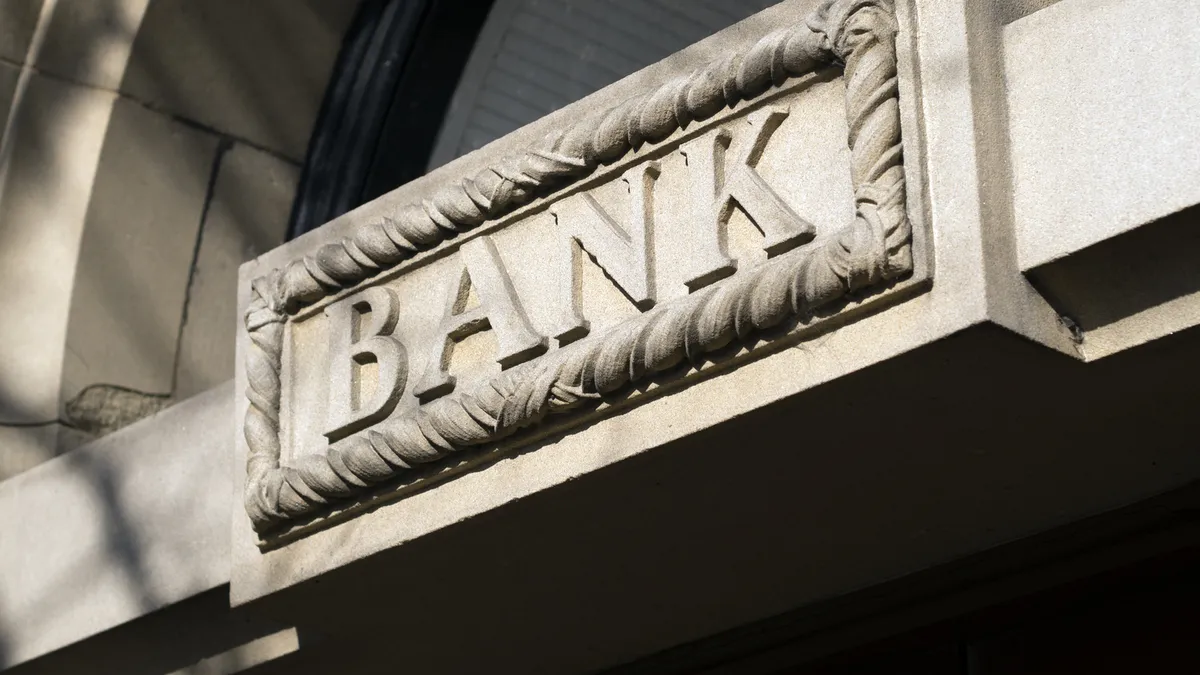UPDATE: April 27, 2020: HSBC's transformation plan appears to be in a state of flux.
Europe’s largest lender had planned to cut 35,000 jobs by the end of 2022.
CEO Noel Quinn said Friday, concurrent with the bank’s annual general meeting, that he would proceed with the plan "wherever possible." The bank cut a number of top roles in its investment bank last week, according to memos seen by Reuters.
However, the remarks serve as a bit of a turnabout from a memo Quinn wrote last month indicating that the bank had decided to "pause, for the time being, the vast majority of redundancies."
In further remarks Friday, according to Bloomberg, Quinn said, “We will need to consider what additional actions we need to take in response to the new economic circumstances that will emerge post Covid-19,” adding that the crisis had made the global economy “considerably more uncertain.”
The bank is set to announce its quarterly earnings Tuesday.
Dive Brief:
- HSBC's plan to cut 35,000 jobs and offload $100 billion in assets by the end of 2022 would have to wait if the coronavirus crisis drags on, four sources told the Financial Times.
- The bank would prefer to meet face to face with clients with whom it seeks to cut ties. But distancing measures, or effective lockdowns in some countries, are making this goal impossible, the publication reported.
- Despite the outbreak, the bank is confident it can triple its number of billionaire clients in Greater China over the next three years, an HSBC executive told Bloomberg.
Dive Insight:
HSBC is not the only major European lender in the midst of a drawdown as the coronavirus crisis globalizes. Deutsche Bank last year announced plans to shed 18,000 jobs and to create a "bad bank" to spin off $83 billion in unwanted assets.
However, a precipitous drop in market valuations may make it inopportune for any bank to sell assets it no longer wants.
"We would have to package up exposures and sell them at rock bottom prices: it would be unattractive and unnatural to push that through right now," a person familiar with HSBC’s plans told the Financial Times. "A whole lot of what we have to do, such as offloading clients and reducing risk-weighted assets can’t be done in this environment."
The bank could continue to identify expendable clients and assets, but even that may face delays if executives' attention is needed on coronavirus-related matters, one source said. Additionally, any move to separate from clients may face blowback as regulators have asked banks to do all they can to support companies affected by the outbreak.
"If you’re a regulator, you’ll be saying to banks, 'Guys, all those grand restructuring plans you had — forget about them and focus on the day-to-day,'" a person familiar with the situation told the Financial Times.
The virus has forced some HSBC employees to work from home — a prospect that may also complicate the bank’s effort to downsize in the short term.
"You can’t fire a trader in Europe over the phone when he is either working from home or taking care of a sick family member," an HSBC source told Reuters.
HSBC, in its annual earnings release last month, said it would scale back its presence in the U.S. and mainland Europe, instead investing more in its Asian and Middle Eastern operations.
Indeed, the time it was taking HSBC to revive growth in Asia allegedly led to the ouster of the bank’s former CEO, John Flint, in August. The bank tapped its interim CEO, Noel Quinn, to take the top role permanently Tuesday.
However, in last month’s release, HSBC Chairman Mark Tucker said the bank lowered its estimate for Asia growth in 2020 as a result of the virus.
Despite that, Tan Siew Meng, the bank’s Asia Pacific head of global private banking, sees Asia’s ultra-high net worth clientele as a "very, very critical piece" to HSBC’s growth strategy.
"Even if 2020 is going to be impacted [by the virus], the trajectory will come back," Tan told Bloomberg. "It will pick up again when business activity or when travel starts to resume. We are not concerned."
About 75% of the private banking unit’s $151 billion in Asian client assets last year came from the segment that serves customers with $30 million or more to invest, Bloomberg reported. And about 60% of client referrals to the private bank in Asia last year came from within the group, Tan said.














